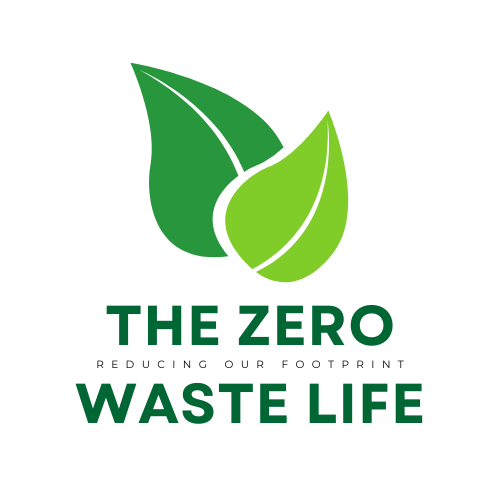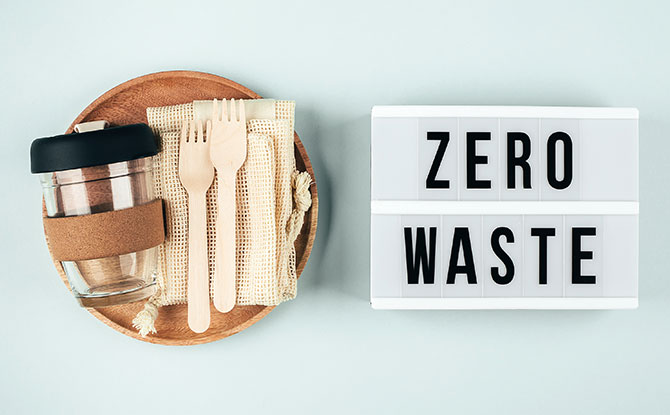Are you ready to make a positive impact on the planet? Curious about how you can reduce waste and live a more eco-friendly lifestyle? Transitioning to a zero waste lifestyle may seem daunting, but with the right strategies and tips, it’s easier than you think.
In this guide, we’ll show you practical and achievable ways to transition to a zero waste lifestyle. From simple swaps to conscious choices, we’ll explore how you can reduce waste, live more sustainably, and contribute to a healthier planet. Are you ready to embark on this journey of mindful living?
What is Zero Waste?
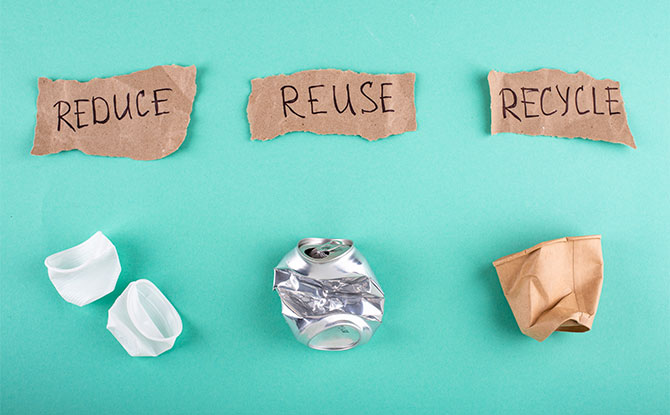
Zero waste is a philosophy that aims to minimize waste and ensure nothing is sent to landfills or incinerators. The concept of zero waste originated in the 1970s and has since gained momentum as a sustainable solution for waste management.
The core principles of zero waste are guided by the 5 Rs: refuse, reduce, reuse, recycle, and rot.
By following these principles, individuals and communities can significantly reduce their waste output and make a positive impact on the environment.
In the United States alone, approximately 146 million tons of waste are sent to landfills each year, leading to a range of environmental and social issues. Food waste, in particular, is a significant contributor to this waste stream. Adopting a zero waste approach can help address these issues by reducing greenhouse gas emissions associated with waste management and conserving valuable resources.
Zero waste goes beyond recycling and encourages a holistic approach to waste reduction. It emphasizes the need to refuse single-use items, such as plastic bags and straws, that contribute to the growing waste problem.
By refusing unnecessary products and packaging, individuals can prevent waste generation at the source. Additionally, embracing the principles of reduce, reuse, and rot allows for creative solutions that minimize waste and maximize resource efficiency.
Tips On How to Start Living a Zero Waste Lifestyle
To start living a zero waste lifestyle, it is important to assess your current waste habits and identify areas for improvement. Take a close look at your daily routines and consumption patterns to determine where waste can be reduced. Once you have identified these areas, set achievable goals to gradually reduce waste.
Remember, transitioning to a zero waste lifestyle is a journey, and it’s okay to start small. Begin by making simple changes, such as carrying a reusable water bottle, coffee cup, and shopping bags with you. By doing so, you can significantly reduce single-use plastics and make a positive impact on the environment.
Creating a comprehensive action plan is crucial to effectively transition to a zero waste lifestyle. Consider purchasing reusable items like cloth napkins, beeswax wraps, and stainless steel lunch containers to eliminate the need for disposable alternatives.
In addition, start a composting system at home to divert organic waste from landfills. Composting not only reduces waste but also creates nutrient-rich soil for your garden. Research local recycling options available for hard-to-recycle items, such as electronic waste, batteries, and light bulbs.
By being mindful of your consumption habits and making intentional changes, you can foster a zero waste lifestyle. Small actions, when done collectively, can make a significant difference in reducing waste and promoting sustainable living.
1. Stop Overcooking to Reduce Food Waste in the Kitchen

Food waste is a significant contributor to overall waste production. By taking a few simple steps in the kitchen, you can reduce food waste and make a positive impact on the environment. Here are some tips for practicing sustainable cooking and minimizing food waste:
- Plan your meals: Before grocery shopping, plan your meals for the week. This will help you buy only what you need, reducing the chances of overbuying and food waste.
- Shop with a grocery list: Having a list will help you stay focused while shopping and prevent impulse purchases. Stick to the items on your list to avoid excess food that could go to waste.
- Avoid overbuying: Be mindful of portion sizes and only buy what you can realistically consume. Consider buying smaller quantities or shopping more frequently to ensure freshness.
- Utilize leftovers creatively: Get creative with your leftovers and transform them into delicious new meals. Leftover vegetables can be used in stir-fries or soups, and meat can be used in sandwiches or salads.
- Freeze excess food: If you have excess food that you won’t be able to consume before it spoils, freeze it for later use. Properly labeling and storing food in the freezer will ensure it stays fresh and can be enjoyed at a later time.
- Compost food scraps: Instead of throwing away food scraps that cannot be consumed, consider composting them. Composting is an eco-friendly way to reduce waste and create nutrient-rich soil for your garden.
By following these sustainable cooking habits, you can minimize food waste and make the most of your ingredients. Adopting these practices will not only benefit the environment but also help you save money and create delicious meals.
2. Swap Plastic Containers for Reusable Containers
Plastic containers are a significant contributor to plastic waste and pollution. To reduce your environmental impact, consider swapping plastic containers for reusable alternatives such as glass or stainless steel containers.
By opting for reusable containers, you not only help reduce plastic waste but also enjoy several benefits. Reusable containers are more eco-friendly as they can be used repeatedly, reducing the need for single-use plastics. They also offer longer durability, ensuring that you can rely on them for years to come.
In addition, reusable containers provide better insulation, keeping your food fresher for longer periods. Unlike plastic containers, reusable options have less risk of harmful chemicals leaching into your food, promoting safer and healthier meal storage.
By making this simple swap, you can actively contribute to reducing plastic waste while embracing a more sustainable lifestyle. Reusable containers offer a practical and eco-friendly alternative that aligns with the principles of sustainable living.
3. Say No to Plastic Bags
Plastic bags are a major source of plastic pollution that poses a threat to our environment. To reduce plastic waste and protect our planet, it’s time to say no to plastic bags and embrace reusable alternatives.
When you go grocery shopping or run errands, make it a habit to carry reusable bags with you. These bags are sturdier, more durable, and can be used multiple times, eliminating the need for single-use plastic bags. Not only will you help reduce plastic waste, but you’ll also contribute to a cleaner and healthier environment.
By saying no to plastic bags and opting for reusable bags, we can make a significant impact in reducing plastic waste. Together, let’s take a stand and make a difference in creating a more sustainable future.
4. Say No to Plastic Straws
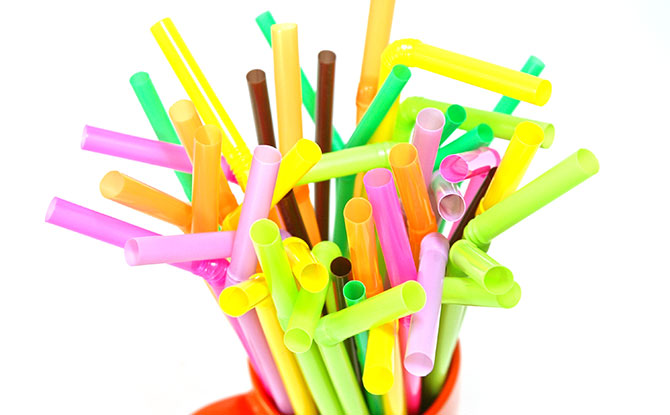
Plastic straws are a major environmental hazard, especially for marine life. These single-use items contribute to the growing problem of plastic pollution in our oceans and landfills. However, there is a simple solution to this issue – say no to plastic straws and choose sustainable alternatives such as reusable straws.
Reusable straws, made from materials like stainless steel or bamboo, offer a durable and eco-friendly option. They are easy to carry with you, whether you’re at home, at a restaurant, or on the go. By refusing plastic straws and using sustainable alternatives, you can actively participate in reducing the amount of plastic waste that ends up harming our environment. It’s a small change that can make a big difference.
Embracing reusable straws is not only beneficial for the planet but also for your personal health. Plastic straws often contain harmful chemicals, such as BPA, which can leach into your drink. By switching to reusable straws, you eliminate the risk of ingesting these toxins.
So, the next time you order a beverage, remember to say no to plastic straws and choose reusable options instead. By making this simple swap, you can be part of the solution and contribute to a more sustainable and eco-friendly way of living.
5. Say No to Plastic Utensils
Plastic utensils are often used only once and then thrown away, contributing to the growing problem of plastic waste. By saying no to plastic utensils and opting for reusable alternatives, you can make a significant impact on waste reduction. When eating on-the-go or ordering takeout, bring your own set of reusable utensils made from stainless steel or bamboo. These utensils can be easily washed and used repeatedly, eliminating the need for single-use plastic utensils.
Investing in reusable utensils not only helps to minimize the amount of plastic waste generated but also promotes a zero waste lifestyle. By making this simple switch, you are taking a proactive step towards a more sustainable future.
6. Swap the Car for Biking, Walking, or Public Transit

Transportation is a significant contributor to carbon emissions and waste production. To reduce your carbon footprint and embrace a more eco-friendly commute, consider swapping the car for biking, walking, or using public transit whenever possible.
Biking is not only a sustainable transportation option but also a great way to stay active and improve your overall health. By cycling to work, school, or nearby destinations, you can reduce air pollution, conserve energy, and save money on fuel costs. Plus, it’s a fun and enjoyable way to explore your surroundings and connect with the community.
If biking is not feasible, walking is another eco-friendly alternative. Walking is a simple and accessible mode of transportation that requires no fuel and produces zero emissions. Incorporating walking into your daily routine not only helps reduce your carbon footprint but also improves cardiovascular health and boosts mental well-being.
Public transit, such as buses, trains, or trams, is a convenient and sustainable option for commuting longer distances. By using public transit, you can significantly reduce the number of cars on the road, leading to less traffic congestion and lower greenhouse gas emissions. Additionally, public transit networks are continually striving to improve their environmental impact, with many implementing hybrid or electric buses and embracing renewable energy sources.
By choosing these eco-friendly modes of transportation, you can make a positive impact on the environment and promote a greener future. So, the next time you travel, consider leaving your car behind and opting for a sustainable commute that reduces your carbon footprint and supports a more eco-friendly lifestyle.
7. Buy in Bulk
Buying in bulk is an effective way to reduce packaging waste and promote sustainable consumption. By purchasing pantry staples like grains, nuts, and spices in bulk, you can avoid excessive packaging and minimize the amount of waste generated. Buying in bulk also offers financial benefits as it allows you to save money and have better control over the quantity of products you purchase, reducing the possibility of unnecessary waste. Embracing bulk shopping not only helps you adopt a more eco-friendly lifestyle but also contributes to the overall reduction of packaging waste, supporting a healthier and more sustainable planet.
8. Avoid Food Wrapped in Plastic

Much of the food we buy comes wrapped in plastic packaging, contributing to plastic waste. To reduce your environmental impact, it’s important to avoid food wrapped in plastic and seek out plastic-free alternatives.
When grocery shopping, consider visiting farmers markets or grocery stores that offer package-free options. These establishments prioritize sustainable practices and provide fresh produce without unnecessary plastic packaging. By supporting local food producers who prioritize sustainable and plastic-free packaging, you can make a positive impact on the environment.
Additionally, be mindful of the packaging choices you make when purchasing other food items. Opt for products that use minimal or eco-friendly packaging, such as glass jars, paper bags, or compostable materials.
By consciously choosing plastic-free alternatives and supporting sustainable food systems, you can help reduce plastic waste and make more sustainable food choices.
9. Pick Loose Leaf Tea instead of Tea Bags

When it comes to enjoying a cup of tea, opt for loose leaf tea instead of tea bags to promote sustainable tea consumption and reduce plastic waste.
Tea bags often contain plastic fibers, which can be detrimental to the environment. By choosing loose leaf tea, you not only eliminate the need for single-use tea bags but also benefit from better flavor, quality, and the freedom to customize your brew.
Investing in a tea infuser or tea strainer allows you to brew loose leaf tea easily and conveniently. Simply place the loose leaves in the infuser, add hot water, and let it steep to perfection. Loose leaf tea offers a more immersive tea-drinking experience, allowing you to savor the aroma and taste of high-quality leaves.
By making the switch to loose leaf tea, you contribute to sustainable tea consumption and minimize plastic waste. Embrace loose leaf tea as an eco-friendly and waste-free alternative to tea bags, and enjoy a delicious cup of tea while doing your part for the planet.
10. Swap Plastic Wraps with BeeswaxWraps
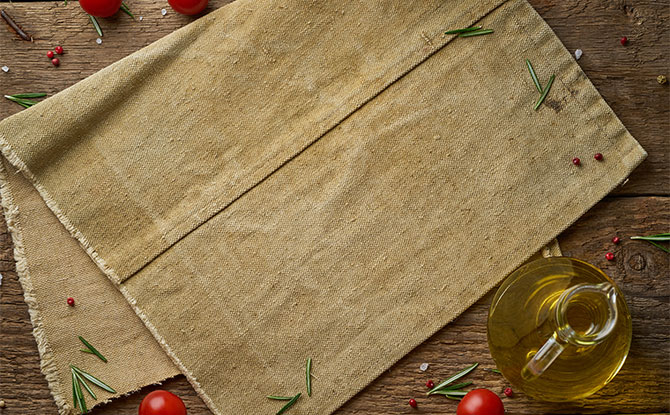
Plastic wraps are single-use and contribute to the growing problem of plastic waste. However, there is a sustainable alternative that you can swap them with: beeswax wraps.
Beeswax wraps are made from all-natural materials such as beeswax, cloth, oil, and pine resin. These eco-friendly wraps provide a reusable and biodegradable option for food storage.
Beeswax wraps can be used to wrap sandwiches, fruits, vegetables, cheese, and more. Their pliable nature allows them to mold around the food, creating a seal that helps keep it fresh. The heat from your hands activates the wax, enabling the wrap to stick to itself and the container, eliminating the need for plastic wrap or aluminum foil.
In addition to being eco-friendly, beeswax wraps offer several benefits. They are breathable, allowing your food to stay fresher for longer. They can be washed with cold water and mild soap, allowing them to be reused multiple times.
Beeswax wraps are also biodegradable, meaning they will naturally break down over time and have a minimal impact on the environment.
By making the switch from plastic wraps to bees wraps, you can significantly reduce your plastic waste and promote sustainable food storage practices. Beeswax wraps are a great alternative for those who are looking to live a more environmentally conscious lifestyle without compromising on convenience or functionality.
11. Swap Soap Bottles with Soap Bars
One simple yet effective swap you can make in your bathroom to reduce plastic waste and promote sustainable personal care is to replace soap bottles with soap bars. Soap bottles often contain plastic, contributing to the growing issue of bathroom waste. By switching to soap bars, you can significantly minimize plastic waste and embrace a plastic-free bathroom.
Soap bars are not only eco-friendly but also long-lasting. They come in minimal packaging, reducing the overall environmental footprint. Unlike soap bottles, which are typically made with non-recyclable materials, soap bars can be easily recycled or composted, further reducing their impact on the environment.
Another advantage of soap bars is the wide range of scents and formulations available. Whether you prefer a refreshing citrus scent or a calming lavender aroma, there is a soap bar suitable for everyone’s preference. You can also find specialized soap bars for specific skin types or conditions, such as moisturizing soap bars for dry skin or antibacterial soap bars for extra hygiene.
By choosing soap bars over soap bottles, you not only contribute to the reduction of plastic waste but also adopt a more sustainable approach to personal care. So next time you run out of soap, consider making the switch to soap bars for a plastic-free bathroom and a cleaner planet.
12. Swap Conventional Cleaning Products for Eco-friendly Products
When it comes to keeping our homes clean and tidy, many of us turn to conventional cleaning products. However, these products often contain harsh chemicals that can be harmful to both our health and the environment. Additionally, they typically come packaged in single-use plastic bottles, contributing to the global plastic waste problem.
Fortunately, there are eco-friendly alternatives available that allow us to maintain a clean and sustainable home. By swapping out conventional cleaning products for eco-friendly options, you can reduce chemical waste and minimize your impact on the planet.
Look for cleaning products that are made from natural ingredients and free from harmful chemicals. These eco-friendly cleaning products are just as effective as their conventional counterparts but without the negative environmental consequences. Additionally, choose products that come in packaging that is recyclable or made from recycled materials. This helps to reduce plastic waste and promotes a circular economy.
Another option is to opt for cleaning products that can be refilled. Many brands now offer refillable cleaning products, allowing you to reuse the same bottle multiple times. This is a great way to significantly reduce plastic waste and make your cleaning routine more sustainable.
By swapping conventional cleaning products for eco-friendly alternatives, you can create a safer and healthier living environment for yourself and your loved ones. Additionally, you’ll be actively contributing to the reduction of chemical waste and plastic pollution.
13. Swap out Paper Print Newspapers & Magazines for Digital

Paper newspapers and magazines contribute to a significant amount of waste in our environment. However, there is a simple solution to reduce this waste and embrace a more sustainable lifestyle: swap out paper newspapers and magazines for digital versions.
By choosing digital reading options, such as online subscriptions, e-books, or audiobooks, you can help minimize paper waste. Digital media consumption not only saves trees but also reduces the energy required for the production and distribution of physical copies.
Embracing digital reading has numerous benefits. It allows you to access a wide range of content seamlessly, carry your favorite books and magazines with you wherever you go, and even customize your reading experience. With just a few taps on your device, you can contribute to a paperless lifestyle and play a part in sustainable media consumption.
So, next time you reach for a paper newspaper or magazine, consider the eco-friendly alternative of digital reading. By making this small swap, you can make a big difference in reducing paper waste and promoting a sustainable future.
Take your zero waste lifestyle further by reading this article: Energy Saving Tips for Eco-Friendly Homes
